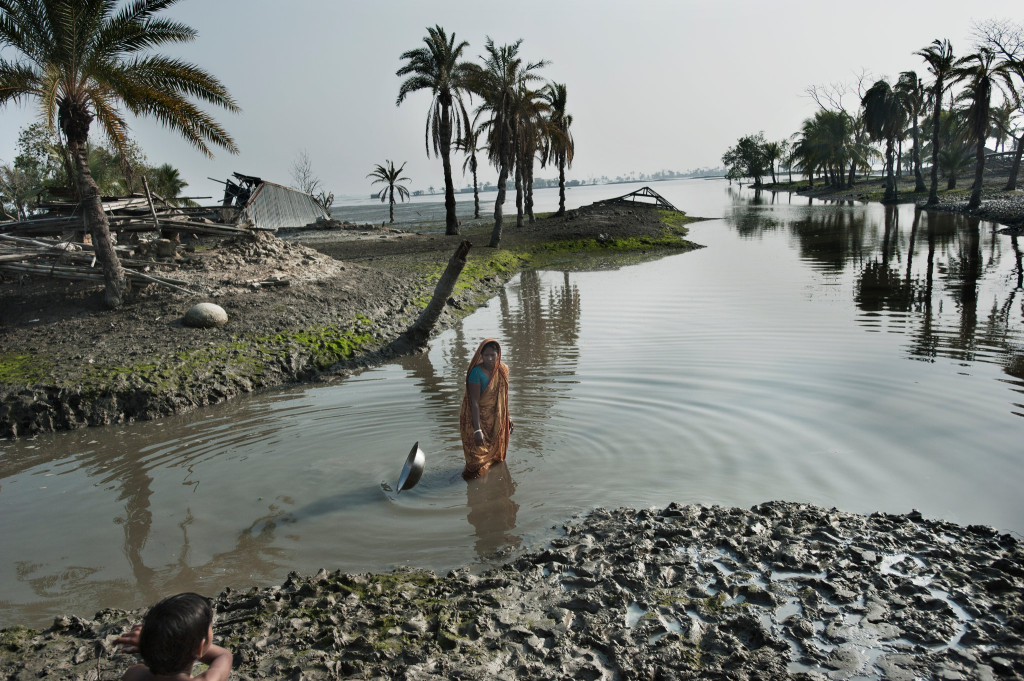In Harm’s Way
Millions of people are in the path of rising seas. The time for action is now.
The NY Times has run a series of articles in the past few days dealing with disaster issues. Taken together, they highlight the urgency of government action to protect populations in harm’s way.

One article dealt generally with the threat posed by sea level rise. Miami is something of a poster-child for these problems, given its low elevation, proximity to the sea, and exposure to hurricane threats. But it’s far from the only place in the world facing serious problems.
Sometimes the threat isn’t the obvious one of coastal incursion. For instance, in Miami, the flood threat comes as much from below as above, because the city is built on highly porous limestone:
“You’re not necessarily getting water pouring up over a barrier — instead, it’s seeping through the limestone and coming up through drains,” said Leonard Berry, co-director of the Climate Change Initiative at Florida Atlantic University. “It’s already happening. And it’s not very pleasant.”

That seems to be an unusual situation, but there are many places where a key threat involves salt water intrusion into groundwater, threatening agricultural and drinking water sources.
A second article dealt with the clash between government protection and property rights in high risk zones. It’s easy to complain that the government should have kept people out of harm’s way. But when it tries to do so, it is often met by claims that it has violated the Constitution. Those claims should have their limits. One of the most notable parts of the article involved Richard Epstein, the intellectual father of the property rights movement. Speaking of the recent Omo landslide, Epstein said:
The case is a no-brainer in favor of extensive government regulation in order to protect against imminent perils to life and health. I’m a property guy, but I’m not a madman.
Although not mentioned in the article, it’s also noteworthy that Epstein is a supporter of the public trust doctrine. His views are more complex than many people (probably including many of his would-be followers) realize.

The third article was about Bangladesh, with its 160 million people packed into an area the size of New York State. Bangladesh is at the top of the list of countries with major populations in peril from sea level rise. Much of the country is close to sea level. The Times reports that “”Scientists expect rising sea levels to submerge 17 percent of Bangladesh’s land and displace 18 million people in the next 40 years.”
Reader Comments
3 Replies to “In Harm’s Way”
Comments are closed.






Dan, the tragedy is that this is not serious front page headline news yet.
People just aren’t prepared to deal with this information yet, the deniers are still winning because there are no highly respected scientific and/or academic spokespersons to get our attention focused on protecting our planet for future generations, and now us.
Dear Dan (and Anthony),
It’s nice of you to want save us from climate change, in fact you make us seem ungrateful, and perhaps we are. We could be grateful but we know that it makes no difference. You are sincere and truly want to help us, and we want to help you, but we both know by now how utterly futile this has become. I wish there was more I could do. Try not worry about it too often, let it go gently, think about things which are pleasant and have a good day.
BQRQ, thank you for your thoughts.
Historians Will and Ariel Durant concluded that it is up to politicians and intellectuals to meet the challenges of change that have destroyed previous civilizations.
As of today, Berkeley has the best resources in the world to make the right things happen to protect the planet for our newest and long term future generations.